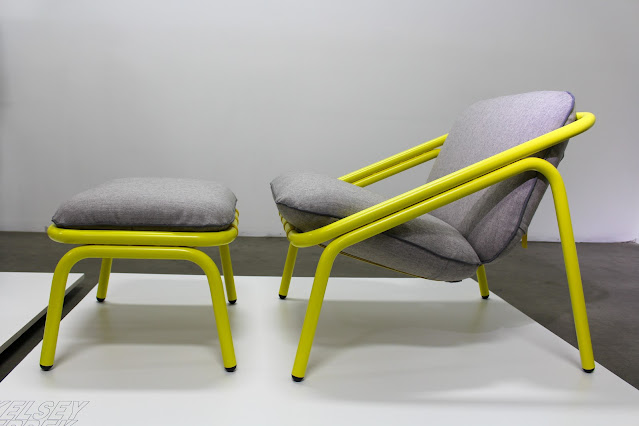Designer Cultural Understanding versus Market Surveys- Walter D. Teague
The Successful Design Business Practices of Walter Dorwin Teague
Part 4 of 5
Design Research and Designer Cultural Sensitivity versus Market Surveys
(click here for part 1, part 2, part 3)
 |
| Designers at the boards in the New York Teague office. About 1940. Photo by Stowe Myers. |
Teague believed in the designer’s intuitive sensitivity of culture and understanding of the client and end-user, to lead them to the best design solution. Teague expresses the limitations of marketing and surveys in this speech in Detroit 1960:
“These people can’t tell you what they are going to like three years from now- that’s been completely proven; but they can’t even tell you what they will like today if you’ve never seen it. So the designer will learn next to nothing from the quiz programs some companies conduct at great expense. But the designer should be aware of and sensitive to the trends that are moving in this small, communicative world of ours….
And when you find this attitude of mind expressing itself in architecture, home and office furnishings, machine design, and a hundred fields of human endeavor, you had better get in tune with it. It is the voice of your times speaking to you, and your sensitivity to this spirit of your age is your greatest asset. The men who count heads and add up answers to questionnaires can produce no creative additive for your use: the people they question haven’t yet seen the thing that is going to thrill and excite them and it is your job to reveal it to them.” (Teague)
W. Dorwin Teague Jr. writes this about dealing with resistance to change:
“The client’s marketing group was sometimes more of a problem in getting a new design accepted than the engineering department. With marketing we were dealing with intangibles difficult to define and pitting our recommendations against their years of experience in the industry. I’m sure every designer has encountered the complaint that, ‘We tried that back in 1954 and it caused nothing but trouble’ or ‘the so-and-so company did that in 1962 and almost lost its shirt.’ These experiences may indeed have been bad news at the time but in the intervening years the public’s taste could have changed radically or new materials and techniques been developed which eliminated the original cause of the trouble. Sometimes there was a reluctance to go to a radically new design because “it is ahead of its time.” A favorite example used to justify this attitude was the Chrysler Airflow [automobile] which failed, not because it was ahead of its time, but because it was a supremely ugly design.” (Teague, W.D. Jr. 50)
Teague was always prepared to deal with opponents to progress. He had rational arguments ready to deal with those who were resistant to change. He also directed his designers to be sensitive to culture, to have a pulse on the trends of the public, and trust their intuition, not market surveys. He encouraged them to look to other innovative fields for ideas and inspiration.
Coming up next in the final part of this article: “Design is our business, not theirs. We never show them sketches and never present alternatives.” – W.D. Teague
Works Cited
Teague, W. Dorwin Jr. Industrial Designer: the Artist as Engineer. Lancaster, PA: Armstrong World Industries, 1998. Print.
Teague, Walter D. "The Responsibilities of the Industrial Designer. An Address to the Detroit Chapter, Industrial Designers Institute." Road & Track Jan. 1960.
Follow the progress of the Teague documentary on Facebook and this blog.



Comments